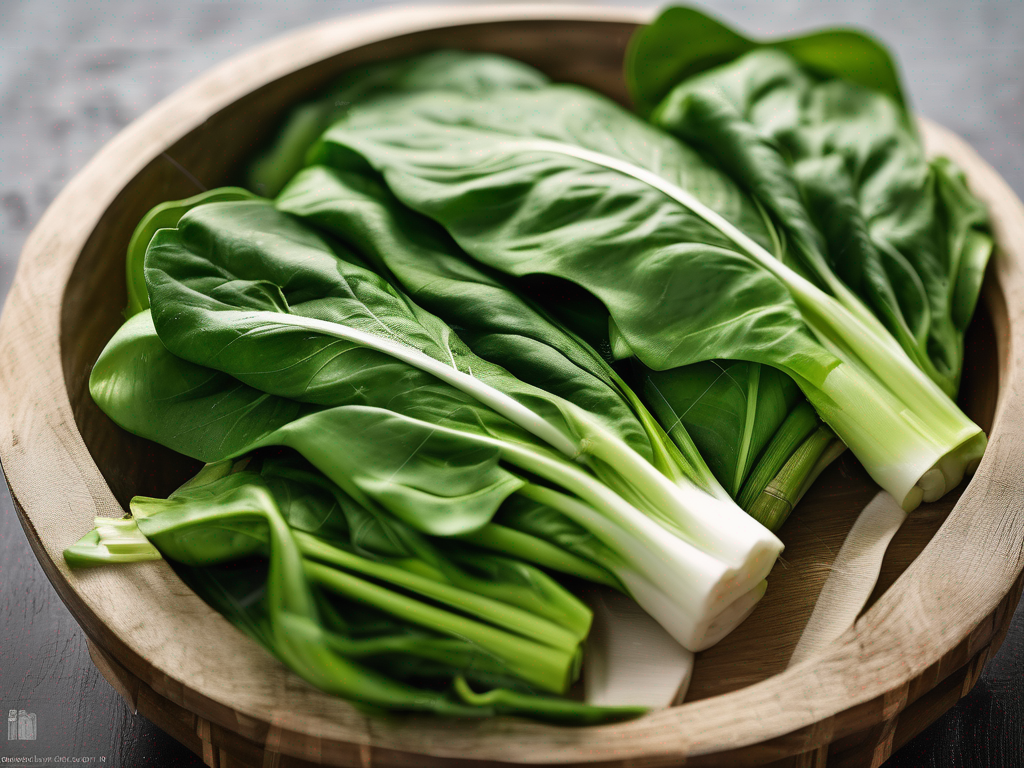
Freezing Pak Choy: A Guide to Extending Its Shelf Life
Get Your Free Food Safety Cheat Sheet
30 most common foods with instant answers. Print it and stick it on your fridge—completely free!
Freezing Pak Choy: A Guide to Extending Its Shelf Life
In today's fast-paced world, finding ways to extend the shelf life of fresh produce like pak choy is essential. Freezing is a convenient method that can help preserve the nutrients and flavors of this versatile vegetable. In this comprehensive guide, we will explore the process of freezing pak choy, its benefits, and essential tips to ensure food safety. (Pak choy)
Benefits of Freezing Pak Choy
Freezing pak choy is a great way to prevent spoilage and reduce food waste. Here are some key benefits of freezing this leafy green vegetable:
-
Extended Shelf Life: By freezing pak choy, you can extend its shelf life for several months, allowing you to enjoy this nutritious vegetable at your convenience.
-
Nutrient Retention: Freezing pak choy helps retain its nutrients, including vitamins A, C, and K, as well as minerals like calcium and potassium.
-
Convenience: Frozen pak choy can be easily incorporated into various dishes, such as stir-fries, soups, and stews, making meal preparation quick and convenient.
How to Freeze Pak Choy
Freezing pak choy is a simple process that can be done in a few easy steps. Follow these guidelines to freeze pak choy effectively:
Step 1: Selecting Fresh Pak Choy
Before freezing pak choy, ensure that you start with fresh, high-quality produce. Look for pak choy that is crisp, vibrant in color, and free from any signs of wilting or discoloration.
Step 2: Washing and Preparing Pak Choy
-
Wash: Rinse the pak choy under cold running water to remove any dirt or debris.
-
Trim: Trim the ends of the pak choy and separate the leaves for easy handling.
Step 3: Blanching Pak Choy
Blanching is a crucial step that helps preserve the color, texture, and nutrients of pak choy before freezing. Follow these steps to blanch pak choy:
-
Boil Water: Bring a pot of water to a boil.
-
Blanch: Submerge the pak choy leaves in boiling water for 1-2 minutes.
-
Cool: Immediately transfer the blanched pak choy to an ice water bath to stop the cooking process.
Step 4: Freezing Pak Choy
-
Drain: Remove the blanched pak choy from the ice water bath and pat dry with a clean towel.
-
Packaging: Place the pak choy in airtight freezer bags or containers, removing any excess air to prevent freezer burn.
-
Label: Label the containers with the date of freezing for easy tracking.
-
Freeze: Place the pak choy in the freezer, ensuring it is laid flat to prevent clumping.
Tips for Freezing Pak Choy
To ensure the best results when freezing pak choy, consider the following tips:
- Use Freezer-Safe Containers: Opt for containers or bags specifically designed for freezing to maintain the quality of the pak choy.
- Avoid Overcrowding: Do not overcrowd the pak choy in the freezer bags or containers, as this can lead to uneven freezing.
- Label and Date: Properly label and date the frozen pak choy to track its freshness and ensure timely consumption.
- Thawing: Thaw frozen pak choy in the refrigerator overnight for best results.
Safety Precautions
While freezing pak choy can help extend its shelf life, it is essential to follow proper food safety practices to prevent contamination and ensure the quality of the vegetable:
- Cleanliness: Always wash your hands and equipment thoroughly before handling pak choy.
- Storage: Store frozen pak choy at 0°F (-18°C) or below to maintain its quality.
- Thawing: Thaw pak choy in the refrigerator rather than at room temperature to prevent bacterial growth.
Conclusion
In conclusion, freezing pak choy is a convenient and effective way to extend its shelf life while preserving its nutritional value. By following the steps outlined in this guide and incorporating the tips provided, you can enjoy the benefits of pak choy for an extended period. Remember to prioritize food safety and proper storage practices to ensure the best results when freezing this versatile vegetable.
For more information on pak choy and other food safety tips, visit [this link](/food/pak choy). (Pak choy)
Authoritative Food Safety References
These agencies and university labs inform every tip and health precaution we publish.
USDA FoodKeeper – Cold Storage Guidelines
Official refrigerator, freezer, and pantry timelines maintained by the U.S. Department of Agriculture.
Visit USDA FoodKeeperFDA Produce Safety Rule & Grower Guidance
Field-to-fridge handling practices that prevent contamination of fruits, vegetables, and leafy greens.
Visit FDA Produce SafetyCDC Foodborne Illness Prevention Hub
Surveillance-backed guidance on pathogens, symptoms, and steps to reduce foodborne illness risk.
Visit CDC Food SafetyUC Davis Postharvest Technology Center
University research detailing optimal storage atmospheres for produce after harvest.
Visit UC Davis PostharvestPenn State Extension – Home Food Preservation & Safety
Peer-reviewed extension bulletins on safe canning, chilling, and reheating practices.
Visit Penn State ExtensionGet Your Free Food Safety Cheat Sheet
30 most common foods with instant answers. Print it and stick it on your fridge—completely free! Want more? Upgrade to the complete guide with 70+ foods.
Scan your food directly and get instant safety info using our AI-powered camera feature.